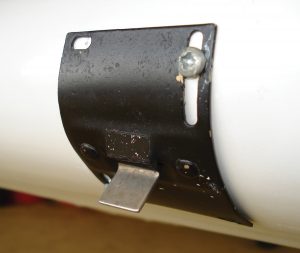
I think a stall warning indicator (SWI) or angle of attack indicator can be an important safety aid if the danger of entering an unanticipated stall and resultant loss of lift/control creates dangerous problems. However, if a light aircraft could be developed where the results of a stall are not detrimental then the SWI could be another unused option.
One of the interesting results of the GlaStar development program is, when controlled by a trained pilot using power and aircraft attitude adjustments, a no problem stall. Since the GlaStar acts the same as most light aircraft in a stall entry but gives huge control improvements in recovery then most pilots flying GlaStars will learn, as I did, that impending stall recognition is not so much a problem. When the stall comes (which is a type of stall warning) the pilot adds power, lowers angle of attack of the wing and keeps right on climbing, turning or whatever they wish to do. I don’t mean to overly simplify this process but it really works. Would a blaring stall horn help? I’m not so sure. We have plenty of stall accidents with working SWI systems in other type aircraft.
If the dangerous problem scenario exists, then I’m all for stall warning indicators. In the Glasair, for example, where stalls create dangerous descents in a hurry, two simple stall strips (no moving parts) attached on the wing always give a tail buffet about two or three knots above stall. They work excellently, in all “G” loadings and give the pilot “feel” or vibration in both the stick (right where your hand can do something about the impending problem) and the seat of your pants. I’d much prefer this type of simple system on a GlaStar.
In the case of the GlaStar the designers started out with fairly gentle stall entry and recovery airfoil. We flew the prototype for a year or so doing all sorts of stalls in the demonstrations and it was a wonderful, controllable airplane. Many of the GlaStar builders flew that airplane and bought kits based on its performance. Aft CG, as in most all aircraft, was still the potential problem. Paul Robinson then designed the simple vortex generator/strake system that gave the GlaStar, not lower stall speed, but pitch, yaw and roll control below stall speed, even at aft CG and gross weight. This is why I call the flight control system the most advanced in light aircraft today. It does require the pilot to learn to use this advantage.
I encourage the development of stall warning systems and all the other interesting things GlaStar builders are doing. However, in my opinion, the current SWI seem not as necessary as an easy to read, accurate airspeed indicator.



